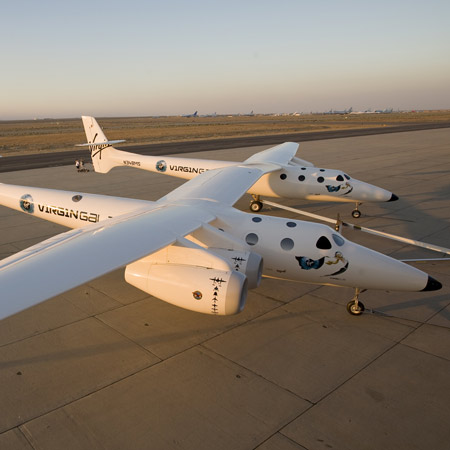
Space tourism company Virgin Galactic have unveiled WhiteKnightTwo, a double-fuselaged aircraft that will carry a spaceship to sub-orbital flight.
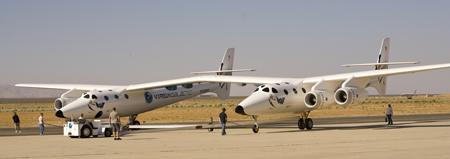
The craft will carry SpaceShipTwo from Virgin Galactic’s New Mexico space port before releasing it 15km above the Earth’s surface, from where the spaceship will take its paying passengers into orbit.
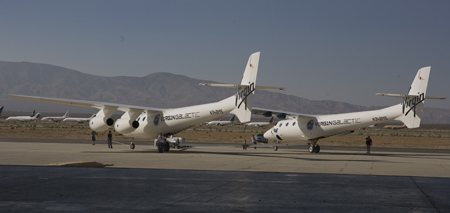
WhiteKnightTwo, christened EVE after Richard Branson’s mother, is expected to take its first flight with SpaceShipTwo next year.
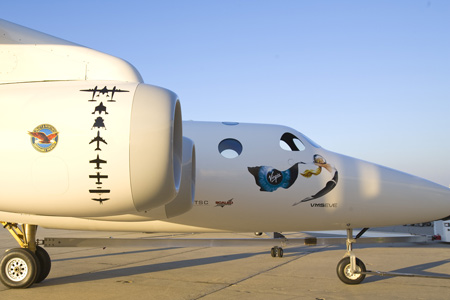
More stories about Virgin Galactic on Dezeen:
SpaceShipTwo
New Mexico spaceport
The following is from Virgin Galactic:
–
WhiteKnightTwo launch vehicle for SpaceShipTwo heralds a new era in aerospace fuel efficiency, performance and versatility
At 140 ft, the wing spar is the longest single carbon composite aviation component ever manufactured.
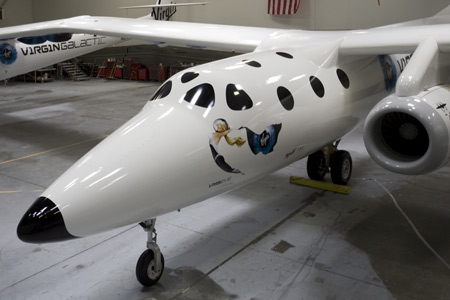
Driven by a demanding performance specification set by Virgin Galactic, WK2 has a unique heavy lift, high altitude capability and an open architecture driven design which provides for maximum versatility in the weight, mass and volume of its payload potential.
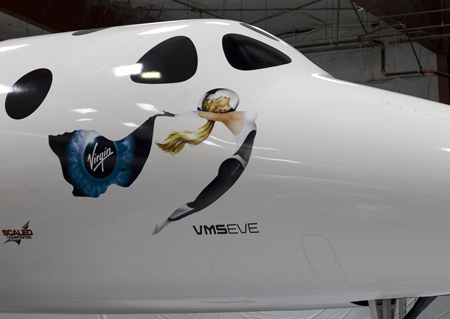
It has the power, strength and maneuverability to provide for pre space-flight, positive G force and zero G astronaut training as well as a lift capability which is over 30% greater than that represented by a fully crewed SpaceShipTwo. The vehicle has a maximum altitude over 50,000 ft and its U.S. coast-to-coast range will allow the spaceship to be ferried on long duration flights.
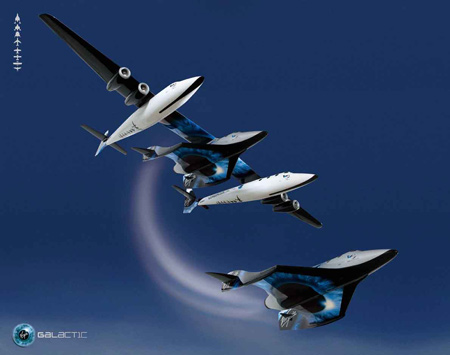
An all carbon composite vehicle of this size represents a giant leap for a material technology that has already been identified as a key contributor to the increasingly urgent requirement by the commercial aviation sector for dramatically more fuel efficient aircraft. Powered by four Pratt and Whitney PW308A engines, which are amongst the most powerful, economic and efficient available, WK2 is a mold breaker in carbon efficiency and the epitome of 21st century aerospace design and technology.
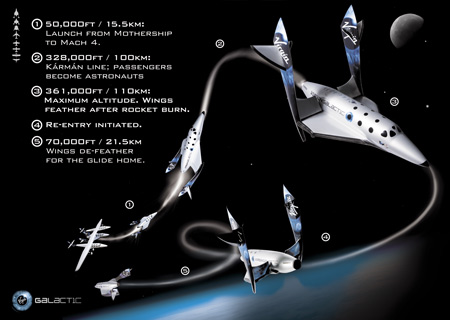
The twin fuselage and central payload area configuration allow for easy access to WK2 and to the spaceship for passengers and crew; the design also aids operational efficiencies and turnaround times. WK2 will be able to support up to four daily space flights, is able to carry out both day and night time operations and is equipped with a package of highly advanced avionics.
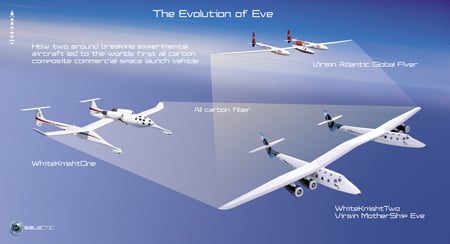
Rutan’s Scaled Composites facility has been strictly out of bounds whilst design and construction has been underway, but guests today were additionally given a tantalizing preview of SpaceShipTwo, clearly visible but heavily shrouded and well on its way to completion, in the smaller of Scaled’s two hangars awaiting its own rollout in 2009.
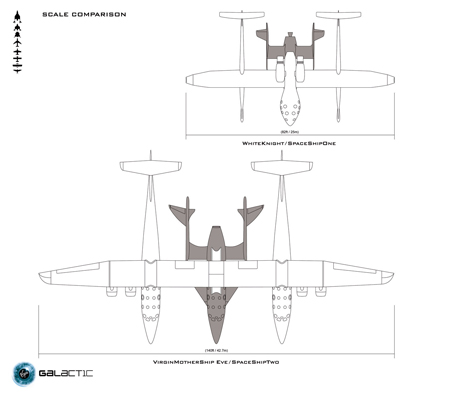
Commenting on the rollout, Burt Rutan, Founder of Scaled Composites said:
“WhiteKnightTwo represents the apogee of the application of carbon composites to aerospace and all of us at Scaled are tremendously excited at the capabilities of the Mothership for SpaceShipTwo. I believe the vehicle will be developed and sold for a variety of launch applications beyond the initial requirements of our launch customer, Virgin Galactic. We have set up a new business jointly with Virgin, The Spaceship Company (TSC), to develop these vehicles and we very much hope that its efficiency will herald a wake up call to the aerospace industry and the necessity of using new materials and technologies in the future”
Sir Richard Branson, Founder of Virgin Galactic added:
“As usual, Burt and the Scaled team have created a beauty and this is a very proud day for us all. The rollout of WhiteKnightTwo takes the Virgin Galactic vision to the next level and continues to provide tangible evidence that this most ambitious of projects is not only for real but is making tremendous progress towards our goal of safe commercial operation.
Virgin Galactic is central to our ambition at Virgin to become the world’s leading group in the operation of energy and environmentally efficient transportation, in the air, on the ground and in space. We are naming it EVE after my Mother, Eve Branson but also because it represents a first and a new beginning, the chance for our ever growing group of future astronauts and other scientists and payload specialists to see our world in a completely new light. I for one can’t wait!”
No comments:
Post a Comment